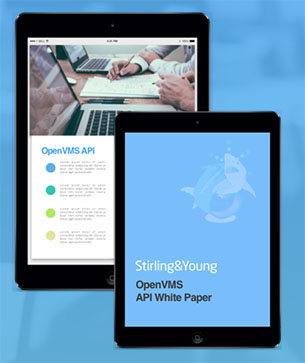The Greenwood School Delivers a Network of Opportunities
The Greenwood School is a boarding and day school for grades 6 through 12 that offers a comprehensive, individualized remedial program, balanced with an emphasis on enrichment programs designed to awaken students’ hidden talents. Greenwood’s individualized program has empowered bright and talented students diagnosed with dyslexia or related language-based learning differences, dyscalculia, ADHD, and/or weaknesses in executive functioning with the skills necessary to bridge the gap between their outstanding promise and present abilities.

Recognizing the rapid integration of technology into all aspects of daily life, and embracing the responsibility to prepare students for a successful future, Greenwood School has made a significant capital and intellectual investment in technology. With the evolved speed and cultural expectations of digesting, processing, and sharing information both socially and in professional life, Assistive Technologies (AT) provide increasingly valuable tools to the entire academic and administrative community. Speech-to-Text and Text-to-Speech software are no longer only at the cutting edge of instruction for the student who faces learning challenges; these assistive tools are routinely utilized by high level professionals who seek increased speed and fluency of information processing and production. With the right instruction and opportunities, assistive tools can offer invaluable bypass strategies that unlock potential for students who face specific challenges with decoding, organizing, processing, and producing information.
“SGCO’s creativity, skills, and depth of understanding have given us the ability to integrate cutting edge assistive technologies and educational software programs throughout our program in a way that has set us apart from our peer schools.” Said Stewart Miller, Greenwood School Headmaster.
The Greenwood School has several significant disadvantages with respect to delivering multimedia learning and educational resources. Located in rural Putney, Vermont the school first has limited options for Internet connectivity. Only ISDN and satellite were viable alternatives. Second, school buildings are dispersed across the 100-acre property with several beyond the distance limits of standard wired or wireless LANs. Several of the outbuildings are used for individualized and special-purpose instruction and require reliable Internet access as a role in these activities.
Getting sufficient bandwidth on the campus was one significant challenge. Another was distributing that bandwidth across campus. These challenges were inhibiting the ability of the school to better serve its students with the kind of individualized interactive education that it was pioneering.
The legacy environment included an incoming two-channel ISDN line which served both telecommunications and data needs. At 128kbps this was inadequate for both phone and Internet. Further, Ethernet LAN and wireless connections to several buildings were unreliable due to distance. This combination also posed maintenance challenges due to the distributed nature of the network. “The old network had outgrown its usefulness, yet the road ahead wasn’t clear,” explained Greenwood School Trustee John Young.
The Greenwood School needed additional IT capability quickly but couldn’t afford to strike out blindly without clear and achievable goals. The project had to have near term success with the ability to achieve longer term goals. And the risks had to be both low and well-understood.
Searching for a Solution
The Greenwood School considered a proposal from a solutions provider for higher bandwidth and better intra-campus connectivity at a cost of $165,000/ plus. This solution involved bringing in satellite bandwidth and running more Ethernet wires across campus at distances well past its design tolerance. The cost was high for a small private school and the technical limitations made it a risky way to move forward.
SGCO Group agreed to look at alternative solutions that could achieve comparable results. After a comprehensive systems analysis that included interviews, needs analysis and technology reviews, the result was that the solutions provider not only delivered a solution for a third of the cost but also significantly improved on both the technical merits and the organization benefits of the original proposal.
SGCO Group determined that satellite Internet bandwidth would be unreliable in the wooded and mountainous area especially during winter snowfalls. Instead it increased Internet bandwidth through the addition of four 2-wire ISDN lines dedicated to data leaving the legacy ISDN line in place to augment voice communications. While the resulting 512kbps bandwidth is still significantly below what is commonly available in more urban locales it proved to be adequate for data traffic to and from the school.
The systems analysis methodology used by SGCO Group determined that much of the requirement for bandwidth was within the campus itself rather than to and from the campus as a whole. Much of that need involved the use of moving digital assets between locations or streaming video or multimedia across campus. While increased outside bandwidth was clearly necessary, fast and reliable bandwidth within the campus was even more so.
SGCO Group addressed the need for intra-campus bandwidth through an innovative fiber optic media solution. All major buildings were wired with high-speed fiber optic connections providing the potential for up to 30Gbps of data transfers between those connections. This makes it possible to use a wide range of video and multimedia instruction technologies in classrooms and other major instructional facilities and not require that students access those technologies in a single place.
Distant buildings on campus are also configured for high bandwidth operations. The dispersed outbuildings used for individualized instruction were a unique and difficult challenge. Extending Ethernet cabling was unreliable and the distances made wireless unrealistic. Repeaters could be used but they would have to be buried underground or housed in specialized structures. They would be difficult or even impossible to access during the winter months.
Instead SGCO Group recommended and implemented a comprehensive campus area network using microwave transmission. Microwave transmitters and receivers were placed in key locations so that data could be transmitted between campus locations.
The solution also employed wireless connectivity but in limited and specialized solutions. Wireless Ethernet enabled students and faculty to access the network and Internet in most locations around the main campus buildings, enabling ad hoc learning opportunities and general email access without having to physically plug into the network. The student dormitories also received wireless connections so that students could work in their rooms or collaboratively in lounges.
“SGCO worked collaboratively with the leadership team at Greenwood to comprehensively understand our unique challenges and needs and custom built the technological foundation upon which we will build our future growth”, explained Headmaster Miller.
Servers and Systems
SGCO Group solution also included upgrades in network servers and clients to better take advantage of the new network infrastructure. The hardware included new servers for domain management, email, Web services, file services and other essential network services.
These servers were configured primarily with Windows 2008 Server with which the IT staff had the most experience. Clients were also primarily Windows-based although users could work with any client that could access the network.
New servers and clients were configured with gigabit Ethernet interfaces to take advantage of as much of the available LAN bandwidth as possible. While Internet access outside the campus is slower overall this enables access of network, Web, and media services at high speeds across the campus.
Summary and Conclusions
Delivering education with technology has become an expensive and moving target. Environmental challenges can result in less-than-optimal solutions unless those challenges are well-understood and planned for.
Costs also play a role in any IT project. The ability to find the lowest cost solution that meets business needs, and to consistently meet a project budget, mean that project cost and schedule reserves can be small, and projects don’t have to be canceled due to runaway costs.
Understanding and scoping the project are key to meeting cost and schedule goals. Many IT projects fail because the organizational needs and IT objectives in meeting those needs aren’t well understood by those working on the project. Such projects are subject to scope inflation, which often leads to out of control spending and indefinite schedules.
SGCO Group employs a methodology that has proven successful in achieving project goals on a strict budget. A key to this methodology is to break up a major project into smaller pieces which can then be achieved with low cost and risk. Early success in IT projects build a foundation upon which subsequent successes can be built.
As its work with The Greenwood School demonstrates SGCO Group made sure it clearly understood both the organizational environment and culture, the business goals, and the IT infrastructure before making its proposal. It accomplished the project in phases and ensured that the results of each phase met organizational goals before continuing.
Ultimately the principle goal is a project that meets organizational requirements on schedule and budget and isn’t disruptive to the business or culture. Thanks to the methodology and skills employed by the SGCO Group, The Greenwood School achieved this goal.
About SGCO
SGCO an Information Technology consulting firm that delivers innovative, scalable business solutions to help our clients reduce costs, increase revenue and gain competitive advantage through technology. Since 1995 the SGCO Group has provided advice, consultancy, design, implementation, training, network support, internal/external business application solutions and digital media communications solutions to a wide range of companies and organizations in more than 12 countries including USA, Canada, United Kingdom, France, India, Australia, South Africa, Serbia, and the Netherlands.

